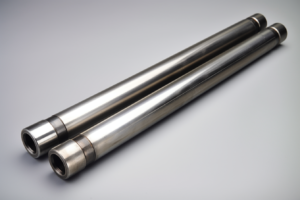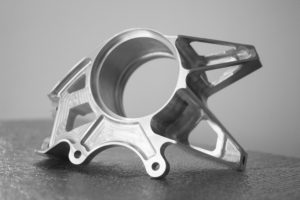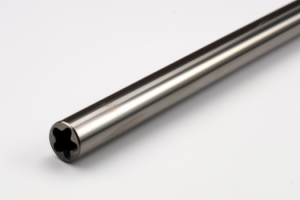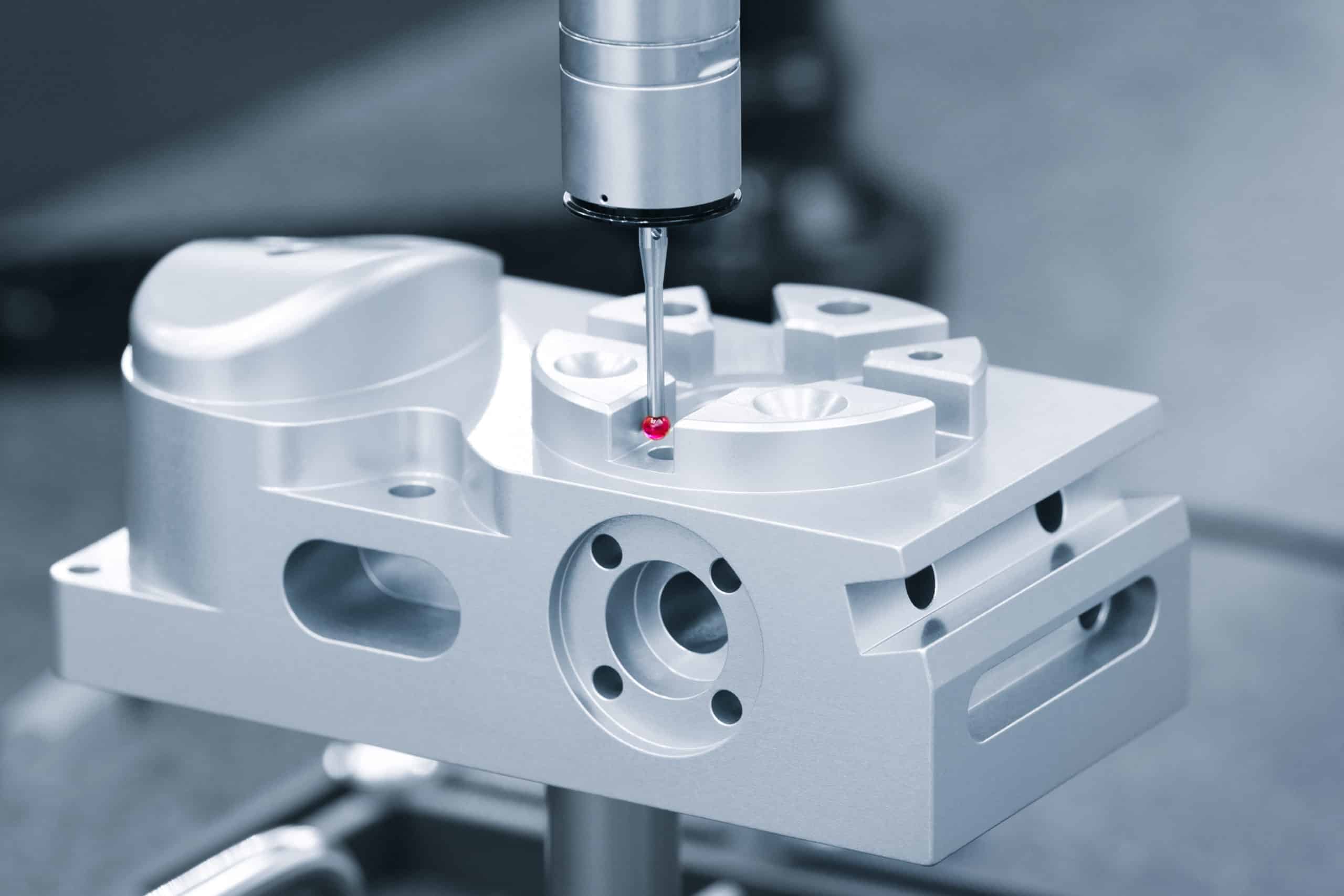Determining when automotive stamping justifies its tooling investment versus sheet metal fabrication challenges product developers daily. With automotive parts requiring precise tolerances and high-volume consistency, the financial decision often hinges on production volume and part complexity.
Automotive stamping makes financial sense when producing thousands to millions of identical parts, with reusable dies reducing long-term manufacturing costs compared to individual fabrication operations. Parts like body panels, structural brackets, and small connectors benefit most, achieving tolerances as fine as 1/1000 mm while minimizing material waste through efficient nesting.
Learn which auto parts merit stamping, real tooling costs, and how to evaluate ROI with volume thresholds and material efficiency data from production.
Table of Contents
When Should You Consider Stamping Over Sheet Metal Fabrication?
Stamping becomes financially viable when producing 10,000+ parts monthly, where upfront tooling investment pays off through dramatically lower per-part costs. This threshold exists because stamping consolidates what would otherwise be multiple fabrication steps—cutting, bending, forming—into a single press operation.
The economics become compelling quickly at volume. Sheet metal fabricated parts costing $15 can drop to $3-12 through stamping, depending on complexity. Automotive projects have demonstrated 80% cost reductions with lead times shrinking from 10 weeks to 4 weeks. That kind of savings easily justifies the initial die investment when running hundreds of thousands of parts annually.
Stamping works best for parts that play to its strengths—body panels, brackets, and connectors that start as flat sheets and need precise forming. The process excels at repeatable precision, churning out thousands of identical parts with minimal variation. Unlike fabrication where each part goes through multiple machine setups, stamping delivers consistency that’s critical for automotive assembly.
For regulated industries, stamping operations maintain ISO/TS 16949 compliance while holding the tight tolerances automotive applications demand.
Design Takeaway: Target stamping when you need 120,000+ parts annually with multiple forming operations. Stick with fabrication for prototypes, frequent design changes, or when tooling costs outweigh volume savings.
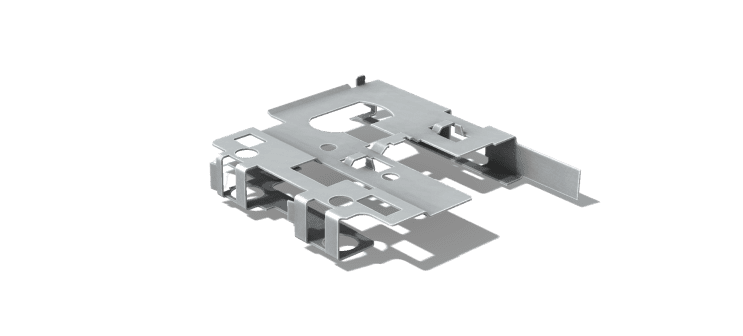
Which Parts Are Best Candidates for Automotive Stamping?
Body panels, structural components, and mounting brackets represent ideal candidates for automotive stamping, particularly parts requiring high-volume production with consistent dimensional accuracy. Stamping excels when transforming flat sheet metal into complex three-dimensional shapes through single-press operations.
Primary Stamping Candidates:
- Body Panels: Doors, hoods, fenders, roofs, trunk lids, quarter panels
- Structural Components: Frame rails, cross-members, chassis brackets, reinforcement plates
- Mounting Hardware: Engine mounts, suspension brackets, exhaust hangers, radiator brackets
- Interior Parts: Seat frames, console panels, instrument panel components, battery trays
- Safety Components: Airbag mounts, seat belt anchors, steering wheel hardware
Exterior panels requiring “Class A” surface finishes benefit most from stamping’s ability to create perfectly smooth, defect-free surfaces critical for visible automotive applications. Safety-critical components like seat belt pretensioner anchors and airbag mounting hardware leverage stamping’s precision for consistent performance across millions of vehicles.
From our experience evaluating automotive projects, parts work best for stamping when they start as flat sheets, require multiple forming operations (bending, drawing, piercing), and need thousands of identical pieces annually. Components like seat belt buckles, brake backing plates, and ECU housings demonstrate stamping’s versatility across automotive systems.
Design Takeaway: Target stamping for sheet metal parts requiring 10,000+ annual units with consistent geometry. Avoid stamping for parts needing complex machined features, frequent design changes, or deep internal cavities that exceed material formability limits.
What Tolerances Can Automotive Stamping Achieve?
Automotive stamping typically achieves ±0.002″ to ±0.005″ tolerances for most applications, with critical components reaching ±0.001″ when required for safety or assembly fit. This precision level often exceeds what’s achievable through traditional sheet metal fabrication methods while maintaining consistency across high-volume production.
In our work with automotive engineers, we regularly see projects where stamping delivers superior consistency compared to fabricated alternatives. Precision stamping operations can hold tolerances as tight as ±0.001″ for automotive safety components like airbag mounts and seat belt anchors. Most body panels and structural brackets perform well with ±0.005″ tolerances, providing adequate fit and function while keeping tooling costs reasonable.
The key advantage over fabrication lies in consistency—stamped parts maintain these tolerances across thousands of identical pieces, eliminating the part-to-part variation common in multi-step fabrication processes. This becomes critical for automotive applications where parts must fit together perfectly in assembly lines or withstand stress in safety-critical systems.
Design Takeaway: Start with ±0.005″ for general automotive parts and tighten to ±0.002″ only for mounting holes, assembly interfaces, or safety components. Stamping’s real value is delivering consistent tolerances across high volumes, not achieving the tightest possible dimensions.

How Much Does Automotive Stamping Tooling Cost?
Automotive stamping tooling typically costs $100,000 to $500,000 depending on part complexity and production volume requirements. Simple brackets and mounting hardware sit at the lower end, while complex body panels requiring multiple forming operations reach higher investment levels.
Standard automotive dies generally cost around $26,000 for basic applications, with progressive dies for high-volume production requiring significantly higher investment due to precision tooling requirements. Premium materials like solid carbide increase costs but deliver longer tool life for high-volume applications.
The major cost risk comes after tooling completion—design changes requiring modifications can add $5,000-15,000 for minor adjustments or 30-50% of original investment for major rework. This reality makes thorough design validation and prototyping essential before committing to production dies.
Expedited delivery schedules significantly inflate costs, especially when tooling shops operate at capacity and require overtime work to meet accelerated timelines.
Design Takeaway: Budget the base tooling cost plus 20-30% contingency for potential modifications. The upfront investment in design validation pays off by avoiding expensive changes to completed tooling.

How Do I Handle the Changeover Period from Fabrication to Stamping?
The biggest challenge isn’t the stamping itself—it’s managing production continuity while your tooling is being built over 8-18 weeks. Most product developers worry about supply disruptions, and rightfully so, since you can’t just flip a switch from fabrication to stamping overnight.
The smart approach involves overlapping your current supply with stamping development. Keep your fabrication supplier running while the stamping tooling gets built and validated. This sounds expensive, but it’s far cheaper than explaining to customers why their shipments are delayed because your new stamping process hit unexpected snags.
Real-world transitions often reveal surprises. We’ve seen projects where stamped parts actually came out better than the original fabricated versions—tighter tolerances, more consistent quality—but it took several production runs to dial in the process. The first stamped parts off new tooling rarely match production specifications immediately.
The transition period becomes your testing ground for validating not just part quality, but also your stamping supplier’s capabilities, delivery consistency, and problem-solving approach. Some companies discover their stamping partner isn’t as responsive as their fabrication shop, which creates new supply chain dynamics to manage.
Design Takeaway: Plan to run dual suppliers for 2-3 months after tooling completion. Your fabrication supplier becomes expensive insurance, but necessary until stamping proves reliable for your specific production requirements.

What ROI Should You Expect from Switching to Stamping?
Expect 50-80% cost reduction per part when switching from fabrication to stamping at high volumes, with break-even typically occurring within 12-24 months depending on annual volume and tooling investment. The economics become compelling when you’re producing tens of thousands of parts annually, where stamping’s speed and consistency deliver measurable savings.
Key ROI Components:
- Direct Cost Savings: $15 fabricated parts dropping to $3-12 stamped parts
- Volume Impact: 50,000+ annual parts typically achieve 18-month payback
- Secondary Benefits: Reduced assembly time, eliminated rework, better inventory management
- Timeline: Break-even within 12-24 months for high-volume applications
Real automotive projects demonstrate dramatic improvements—one case study showed 80% cost reductions with lead times dropping from 10 weeks to 4 weeks for high-volume components. For a 100,000-part annual run, cost reductions deliver $300,000 to $1.2 million in annual savings.
In our experience advising product developers on manufacturing transitions, the ROI calculation depends heavily on volume assumptions. Stamping’s fixed tooling costs get amortized across every part produced, so higher volumes accelerate payback periods significantly.
Design Takeaway: Target stamping when annual volumes exceed 50,000 parts and you can demonstrate 18-month payback on tooling investment. Factor secondary operational benefits into your ROI calculations for a complete financial picture.

How Long Does Automotive Stamping Tool Development Take?
Automotive stamping tool development typically requires 8-18 weeks depending on complexity, with simple brackets at the shorter end and complex body panels requiring extended development time. This timeline includes design, machining, heat treatment, assembly, and initial tryout—all critical steps for producing quality automotive parts.
Typical Development Timeline:
- Design & Feasibility: 2-4 weeks for engineering and analysis
- Tooling Fabrication: 4-10 weeks for machining and heat treatment
- Tryout & Validation: 2-4 weeks for testing and optimization
- Expedited Options: Possible but increases costs 40-60%
Complex automotive parts often require multiple tryout cycles to optimize forming operations and achieve specified tolerances, extending the validation phase. Expedited schedules are possible but significantly increase costs, especially when shops must dedicate overtime resources to meet accelerated delivery dates.
From our work with automotive engineers, timeline planning becomes critical for production continuity. Once tooling is complete and validated, production ramp-up happens quickly—stamping presses can produce thousands of parts in days compared to weeks for fabrication operations.
Design Takeaway: Plan minimum 12-week lead time for tooling development and build buffer time for validation cycles. The upfront time investment pays off through rapid production once tooling is optimized and running.
Conclusion
Stamping becomes financially viable for automotive parts requiring 10,000+ monthly production with multiple forming operations. While tooling investment is substantial, the per-part savings and production speed deliver compelling ROI for high-volume applications. Stick with fabrication for prototypes and design iterations. Contact us to explore manufacturing solutions tailored to your automotive component requirements.
Frequently Asked Questions
Design modifications after tooling completion typically cost $5,000-15,000 for minor adjustments or 30-50% of original investment for major changes. This makes thorough design validation and prototyping essential before committing to production dies to avoid expensive rework.
Parts starting as flat sheets requiring multiple forming operations (bending, drawing, piercing) with annual volumes exceeding 50,000 units are ideal candidates. Body panels, brackets, and structural components work best, while parts needing frequent design changes should stay with fabrication.
Target minimum 10,000 parts monthly (120,000 annually) to justify tooling investment. Below this threshold, fabrication remains more cost-effective due to stamping’s high upfront tooling costs versus fabrication’s lower setup requirements.
Once tooling is complete, stamping delivers parts faster than fabrication—thousands in days versus weeks. However, design changes require tooling modifications with 2-4 week lead times, making stamping less flexible for frequent design iterations.
Plan prototype runs and dimensional verification during tooling tryout phase. Most stamping suppliers provide first-article inspection reports and can produce test quantities for assembly validation before committing to high-volume production runs.
Lower-than-expected volumes extend payback periods but tooling remains viable for future production increases. Higher volumes accelerate ROI beyond projections. Consider starting with simpler tooling for volume uncertainty, then upgrading to progressive dies as volumes grow.



